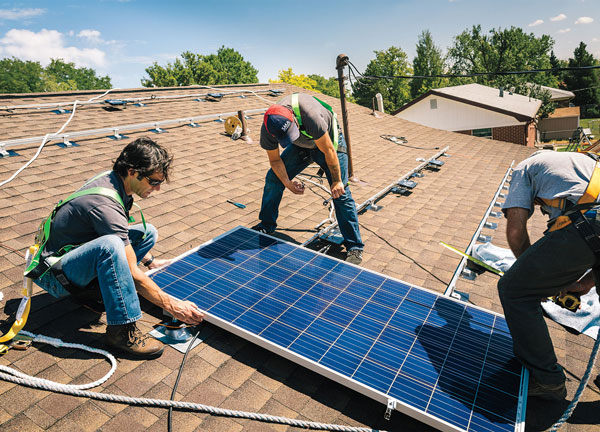Installing solar panels can be one of the ways in which you try to reduce your carbon footprint as a homeowner and in some areas which are more isolated or mountainous in terrain, it can even be the more sensible choice when compared with a traditional grid. Here is what you need to do to prepare your roof for some solar panels or water heaters as every roof is not generally a good match for this type of installation.
Starting With A Clean Canvas
Roofs are generally preferred for residential solar panel installations because they are exposed to the most sunlight and can be used effectively for energy production. Before considering such an installation you need to carefully ascertain the condition of the roof and also check how old it is.
Some houses can be more than 30 years old and have had minimal maintenance work done on them and harsh environmental conditions or the regularity of snow, hail, and rain could have wreaked havoc on a roof’s shingles. Engage a roofing contractor to determine where repairs are needed and conclude those first before carrying out any kind of solar installation.
Is Your Roof Type Ideal?
The type of roof you have on your house also factors into the decision to install solar panels. Most roofs are shingle-based and the shingles can be metal, asphalt, tile, and even wood in some cases and there are also other roof types such as gambrel, gable, hip, and so forth. Some roofs are made to slope in response to reigning climatic conditions and that will also affect how well they can be utilized for solar paneling.
The type of roof that is best for solar installation is typically an asphalt shingle roof. Flat roof varieties that may be finished with tar, cement, or gravel won’t work for most types of solar panels. The type of solar panel (monocrystalline, thin-film, or polycrystalline) also affects its suitability for various roof styles.
Weight Matters
Different solar panels vary in weight so a structural engineer or professional roofing company like Annapolis roofer can determine whether your existing roof can handle the weight or not. Another point to make note of is that solar paneling adds extra stress on any roof so if there is a thunderstorm or rain, there will likely be more damage done to your roof because of the weight of the panels tugging at the shingles.
Clear The Area
Before installing your solar panels make sure your roof isn’t covered with dead leaves, branches, ivy, or any other kind of plants. Trees that are looming over your roof may need to be trimmed along with any other foliage or growth. This may even be time to undergo a comprehensive landscaping project around your home so that it looks neat and tidy for your new and aesthetically pleasing solar panels! Furthermore, satellite antennas or any other fixtures that inhabit your roof will also need to be considered by the installation expert as they may need to be removed and relocated so they do not interfere with the energy generation of the panels.

